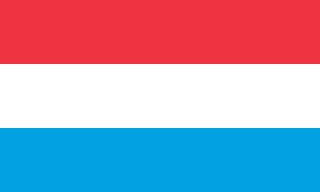
The Winter Olympic Games, also known as the Winter Olympics, is a major international multi-sport event held once every four years for sports practiced on snow and ice. The first Winter Olympic Games, the 1924 Winter Olympics, were held in Chamonix, France. The modern Olympic Games were inspired by the ancient Olympic Games, which were held in Olympia, Greece, from 776 BCE to 394 CE. The Baron Pierre de Coubertin of France founded the International Olympic Committee (IOC) 1,500 years later in 1894, leading to the first modern Summer Olympic Games in Athens, Greece in 1896. The IOC is the governing body of the Olympic Movement, with the Olympic Charter defining its structure and authority. The original five Winter Olympic Sports were bobsleigh, curling, ice hockey, Nordic skiing, and skating. The Games were held every four years from 1924 to 1936, interrupted in 1940 and 1944 by World War II, and resumed in 1948. Until 1992, the Summer Olympic Games and the Winter Olympic Games were held in the same year. A decision to change this was made in 1986, when during the 91st International Olympic Committee session, IOC members decided to alternate the Summer Olympic Games and the Winter Olympic Games on separate four-year cycles in even-numbered years. Also, at that same congress it was decided that 1992 Winter Olympics would be the last to be held in the same year as the Summer Games and that to change the rotation, the games that would be held in 1996 would be brought forward by two years, being scheduled to 1994. After those games, the next were to be held in 1998 when the four-year Olympic Cycle resumed.

The 1948 Winter Olympics, officially known as the V Olympic Winter Games and commonly known as St. Moritz 1948, were a winter multi-sport event held from 30 January to 8 February 1948 in St. Moritz, Switzerland. The Games were the first to be celebrated after World War II; it had been twelve years since the last Winter Games in 1936.

The 1928 Winter Olympics, officially known as the II Olympic Winter Games and commonly known as St. Moritz 1928, were an international winter multi-sport event that was celebrated from 11 to 19 February 1928 in St. Moritz, Switzerland.

The 1932 Winter Olympics, officially known as the III Olympic Winter Games and commonly known as Lake Placid 1932, were a winter multi-sport event in the United States, held in Lake Placid, New York, United States. The games opened on February 4 and closed on February 13. It was the first time the Winter Games were held outside of Europe and the first of four Winter Olympics held in the United States; Lake Placid hosted again in 1980.

Karl Schäfer was an Austrian figure skater and swimmer. In figure skating, he became a two-time Olympic champion at the 1932 Winter Olympics and the 1936 Winter Olympics. He was also a seven-time World champion (1930–1936) and eight-time European champion (1929–1936). As a swimmer, he competed at the 1928 Summer Olympics in the 200 metre breaststroke.

Long track speed skating has been featured as a sport in the Winter Olympics since the first winter games in 1924. Women's events were added to the Olympic program for the first time in 1960 Squaw Valley Olympics.

Luxembourg sent a delegation to compete at the 1998 Winter Olympics in Nagano, Japan from 7–22 February 1998. This was Luxembourg's sixth appearance at a Winter Olympic Games. The Luxembourgish delegation consisted of a single athlete, figure skater Patrick Schmit. In the men's singles he finished in 29th place.
The ladies' individual skating event was held as part of the figure skating at the 1924 Winter Olympics. It was the third appearance of the event, which had previously been held at the Summer Olympics in 1908 and 1920. The competition was held on Monday, 28 January and on Tuesday, 29 January 1924. It was the only women's event at the 1924 Winter Olympics. Eight figure skaters from six nations competed.
The men's individual skating event was held as part of the figure skating at the 1928 Winter Olympics. It was the fourth appearance of the event, which had previously been held at the Summer Olympics in 1908 and 1920 and was also part of the first Winter Games in 1924. The competition was held from Tuesday, 14 February to Friday, 17 February 1928. Seventeen figure skaters from ten nations competed.
The pair skating event was held as part of the figure skating at the 1928 Winter Olympics. It was the fourth appearance of the event, which had previously been held at the Summer Olympics in 1908 and 1920 and was also part of the first Winter Games in 1924. The competition was held on Sunday, 19 February 1928. Twenty-six figure skaters from ten nations competed.
The men's individual skating event was held as part of the figure skating at the 1932 Winter Olympics. It was the fifth appearance of the event, which had previously been held twice at the Summer Olympics in 1908 and 1920 as well as at the Winter Games in 1924 and 1928. The competition was held on Monday 8 February and on Tuesday 9 February 1932. Twelve figure skaters from eight nations competed.
The ladies' individual skating event was held as part of the figure skating at the 1932 Winter Olympics. It was the fifth appearance of the event, which had previously been held twice at the Summer Olympics in 1908 and 1920 as well as at the Winter Games in 1924 and 1928. The competition was held on Tuesday 9 February and on Wednesday 10 February 1932. Fifteen figure skaters from seven nations competed.
The pair skating event was held as part of the figure skating at the 1932 Winter Olympics. It was the fifth appearance of the event, which had previously been held twice at the Summer Olympics in 1908 and 1920 and twice at the Winter Games in 1924 and 1928. The competition was held on Friday 12 February 1932. Fourteen figure skaters from four nations competed.
The men's individual skating event was held as part of the figure skating at the 1936 Winter Olympics. It was the sixth appearance of the event, which had previously been held twice at the Summer Olympics in 1908 and 1920 and at all three Winter Games from 1924 onward. The competition was held from Sunday, 9 February to Friday, 14 February 1936. Twenty-five figure skaters from twelve nations competed.

The ladies' individual skating event was held as part of the figure skating at the 1936 Winter Olympics. It was the sixth appearance of the event, which had previously been held twice at the Summer Olympics in 1908 and 1920 and at all three Winter Games from 1924 onward. The competition was held from Tuesday, 11 February to Saturday, 15 February 1936. Twenty-six figure skaters from 13 nations competed.
For the 1928 Winter Olympics in St. Moritz, Switzerland, a total of five sports venues were used. The main stadium hosted the figure skating, ice hockey, and speed skating events. Skeleton was first held at the Cresta Run. Bobsleigh was held at the bob run. St. Moritz itself served as cross-country skiing venue and the cross-country part of the Nordic combined event. Weather gave two events run at these games problems, creating the largest margin of victory in Olympic history for one and the cancellation of the other.
The pair skating event was held as part of the figure skating at the 1952 Winter Olympics. It was the eighth appearance of the event, which had previously been held twice at the Summer Olympics in 1908 and 1920 and at all five Winter Games from 1924 onward. The competition was held on 22 February 1952. Twenty-six figure skaters from nine nations competed.









